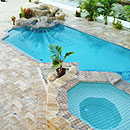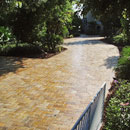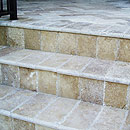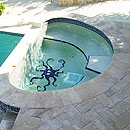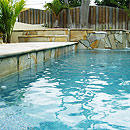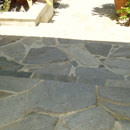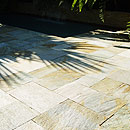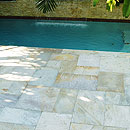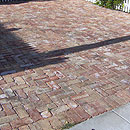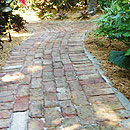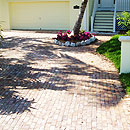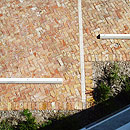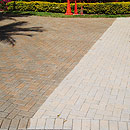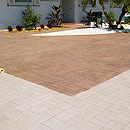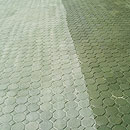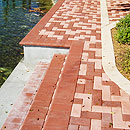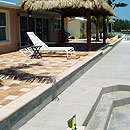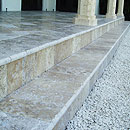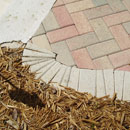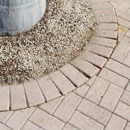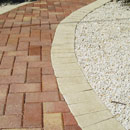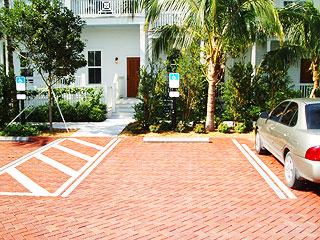
Brick Pavers
Brick pavers come in a variety of colors, shapes and sizes. Colors are divided into 2 categories: White cement (normally light colors) and dark cement (normally darker colors). Pavers are available in single colors up to a combination of 3-4 colors. It is important to realize that color combinations vary and it is recommended to purchase pavers from the same lot. Pavers are produced in 2 main thicknesses; 1” are primarily installed over concrete with a sand bed or thin set. These work well when there are clearance issues like steps and doors. 25/8” pavers are standard for installing over excavated ground and provide the strength and durability for most any application. Brick pavers are the most common, durable and least expensive product available.
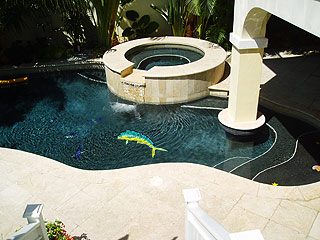
Marble
The 2 main types of marble used for paving are Travertine and Natural Marble. Travertine is neither limestone or marble but a sedimentary rock made of carbonate minerals. When liquid, mainly water, turns into gas the sediment crystallizes and becomes Travertine. Limestone is the youngest natural stone, Travertine is approximately 50 million years old and Natural Marble is the oldest at approximately 100 million years old. In it’s pure stage it is white but changes color due to organic impurities which naturally causes pitting. Travertine will not deteriorate due to weather and erosion, as well as , maintain it’s natural color for decades. Travertine is durable enough to use from driveways to pool decks.
Natural Marble is a metamorphic rock meaning it is primarily formed from changes in pressure and/or heat to an existing medium. Usually the changes occur with limestone or old marble. Color variations are due to mineral impurities causing less pitting. Natural Marble is a much denser product than Travertine. Both stones are natural which provide color variations, therefore, it is important to hand pick production lots for consistent coloring.
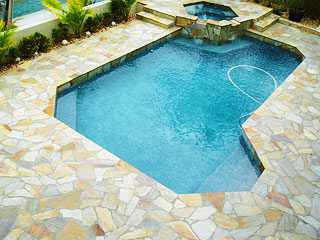
Natural Stone
Most commonly used are Flagstone and Sandstone. Flagstone is a generic term for flat slabs naturally derived from quarries. They are available mostly in browns, reds and blues and are irregular in shape. They can be installed on a bed of sand or thin set over concrete depending on the application. Natural stone is as beneficial to a residential application as a commercial application. They are low maintenance and easily replaced if damaged. Natural stone is strong, durable, sun resistant and heat resistant.
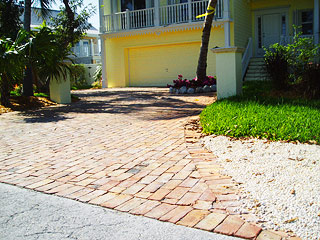
Old Chicago Brick
:This brick originates from Chicago as a kiln fired brick produced from the late 1800’s until the early 1970’s. They are recovered from demolished buildings and go through cleaning processes that may leave some mortar attached or completely cleaned. The surface of the brick will be imprinted with “Chicago Brick Co.” along with other marks identifying production, etc. Every lot of brick have differing shades but generally are light to medium pink or salmon color. These shades are highlighted with gold, yellow and spots of black. The bricks are very irregular in shape due to how they were produced which requires a slightly different installation process. Old Chicago brick are dense and hold a lot of moisture so they have a tendency to attract mold. These are perfect for someone wanting a rustic look with little maintenance.
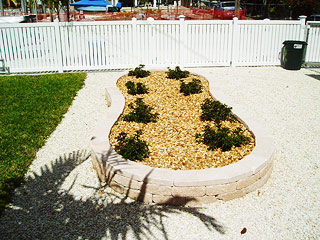
Retaining Wall
Residential applications:
The 2 main reasons for this application are functional and decorative. The functional application may include retaining dirt on an elevated pool, raise or lower varying grades of earth, fire pits, seating or for privacy. The heavier grade block is usually used with this application.
The decorative application can be used for planters, dividers, or to line a walkway. A medium to light grade block is used in this application.
All grades of block come in various color combinations, they may be tumbled and there are caps to lend a finished look . They produce retaining wall colors to match several brick paver color combinations. They provide little to no maintenance and can be used in creative ways.
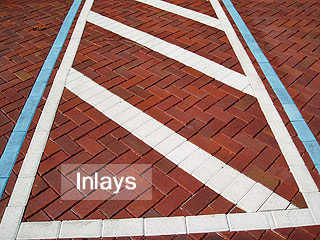
Design and Details
The distinguishing difference between paver companies is attention to detail and the ability to process the wants and needs of the customer. Mitre cuts, flares, curves, inlays, aesthetics, coping, durability, functionality and strength. The project should not only look great but last for decades. This can be the difference between being proud of your project or wishing you had made another choice.
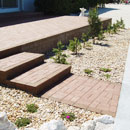 |
 |
 |
 |
||||
|
|||||||
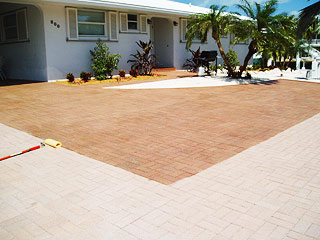
Cleaning and Sealing
Sealing is done for 2 main reasons: 1. To protect the colors you choose from fading. Fading can start to occur shortly after installation. Multiple colored pavers will lose their color variations over time. Sealers, like wax for a vehicle, are designed to keep the rich color lasting for decades if maintained properly. 2. To protect against staining from oil, grease, fertilizer, rust, berries, tanning lotion, chemicals and tire marks. Brick pavers, natural stone and marble are all porous materials that stain easily and permanently if not protected. Sealers vary depending on the situation. There are solvent based, water based, film forming, penetrating and micro-porous which all have a specific application. It is important to note that sealers with high solid content usually produce a high shine and generally made with lower quality acrylics and plastisizers. Be aware if the process is not done correctly there is a good chance clouding will occur resulting in an expensive repair.
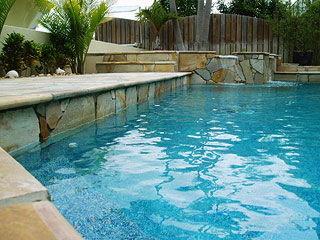
Coping
Coping gives a finished edge to swimming pools, concrete docks, steps and porches among others.
Coping can be used in conjunction with 1” and 25/8” pavers. Cement coping is offered in a variety of colors to match your paver color choice. Marble and natural stone coping is produced to compliment any marble or stone paver project. Coping can be installed with or without grout lines depending on the customer’s preference.
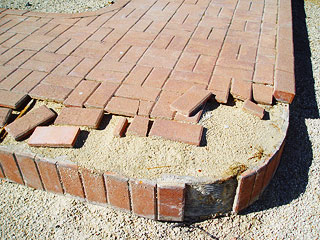
Hall of Shame:
Always ensure you work with a contractor you feel comfortable with and has YOUR best interest in mind. Ask others for recommendations and do not always think the best deal is the lowest price. Also, ensure they are licensed, insured and not hesitant to physically show you past projects. Be sure your not victimized like the following homeowners.
Before and After
 |
 |
 |
 |
 |
 |
 |
 |
 |
 |
 |
 |




